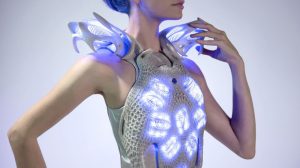With the introduction of smart sensors in our clothes, the fashion industry has also started to digitalize. Our clothes, which have become more sensitive to the environment, will also include applications just like our phones. Clothing digitalized and environmentally connected around program implementations, PLM and E-PLM programming, and a host of other hardware will completely change the fashion industry and our trends.
Today, dozens of fashion companies are working to produce wearable technologies and bring the Internet of Things (The internet of things is the communication network where physical objects are linked with each other or with larger systems. It is embedded with sensors, software, and other technologies to connect and exchange data with other devices and systems over the Internet.) to our clothes, and produce sensors, equipment, and programs that will be indispensable in our clothes in the future. Since the manufacturers can monitor the needs of the market and their customers with the products they produce, they also continue to develop accordingly.
Wearable technologies that make our lives easier will make our clothes smarter and will lead to radical changes in the fashion industry. Smart glasses, smart clothing: They can rise quickly after wristbands and watches, or even with them, and they can become a part of fashion. Thanks to nano-chips adorned with sensors, cameras, mobile-connected devices to increase performance, protect, improve, and provide security, especially sportswear, uniforms, swimsuits, shoes, medical, education, entertainment, arts, culture, seasons, They can be made with various clothes and accessories that can adapt to the environment and weather conditions. Here are some technologies that will be a big trend in the future:
Exoskeletons: We started seeing videos of exoskeletons frequently. Wearable exoskeletons; for the people who work in a factory, who has to lift weights, will become standard after a while to increase the performance of construction, transportation, warehouse, assembly, repair workers and to prevent the risks of injury and any possible death.
Prostheses: We can say that smart prostheses, which are constantly developed to be used in place of various limbs and evaluated within wearable technologies, can be operated by their owners over the nervous system in time, and that prostheses will be wise enough to respond more intuitively to the orders of the individual in the future. At that time, there will undoubtedly be different designs, various colors, patterns, and fashionable versions of the wearable limbs.
Three-dimensional-3D human tissue printing: If humanity can replace limbs with more advanced prostheses and robotic apparatus, it will not take that long to produce fully functional organs with 3D tissue printing in laboratories. When that time comes, we have to be sure that the artificial organ fashion will also come out.


